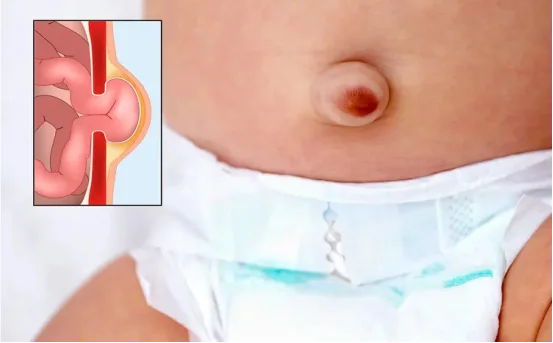Tooth extraction is a common dental procedure that involves removing a tooth from its socket in the bone. Whether it’s due to tooth decay, gum disease, crowding, or impacted wisdom teeth, extractions can be necessary to maintain oral health. While the procedure itself is typically straightforward and performed under anesthesia, the recovery process comes with its own set of symptoms.
Understanding what symptoms of tooth extraction surgery can help you prepare mentally and physically for the healing process.
Why Tooth Extraction Is Needed
Before diving into the symptoms, it’s helpful to understand why tooth extraction might be necessary:
-
Severe tooth decay or infection
-
Impacted wisdom teeth
-
Overcrowding for orthodontic treatment
-
Periodontal (gum) disease
-
Broken or fractured teeth beyond repair
Tooth extraction can be simple (non-surgical) or surgical. Surgical extractions involve cutting into the gum to access the tooth and are more common with wisdom teeth or broken teeth.
Common Symptoms of Tooth Extraction Surgery
Once the anesthesia wears off, you’ll begin to experience a range of symptoms. Most of these are part of the natural healing process and should improve over time.
Pain and Discomfort
-
What to Expect :- Mild to moderate pain is common once the numbness wears off. The intensity often depends on the complexity of the extraction. Surgical extractions usually result in more discomfort than simple ones.
How to Manage:
-
Over-the-counter pain relievers like ibuprofen
-
Prescription medication for more severe pain
-
Cold compresses on the outside of the cheek
-
-
Swelling
What to Expect :- Swelling in the cheeks, jaw, or gums often peaks 24–48 hours after the surgery. It’s your body’s natural inflammatory response.
How to Manage:
-
Ice packs during the first 24 hours
-
Keeping your head elevated while resting
-
Avoiding vigorous activity
-
-
Bleeding
What to Expect :- Light bleeding or oozing is common during the first 24 hours post-surgery. It should gradually reduce.
How to Manage:
-
Bite gently on gauze pads
-
Avoid spitting, sucking through a straw, or smoking
-
Contact your dentist if bleeding is heavy or doesn’t stop after 24 hours
-
-
Bruising
What to Expect :- Some people develop bruising on the cheeks or jaw, especially with surgical extractions. This is more common in older adults or those taking blood thinners.
How to Manage:
-
Gentle ice therapy
-
Rest and hydration
-
It should fade within a week
-
-
Limited Jaw Movement (Trismus)
What to Expect :- Difficulty opening your mouth fully can occur due to muscle stiffness and inflammation, especially with wisdom teeth removal.
How to Manage:
-
Apply warm compresses after the first 48 hours
-
Gentle jaw exercises (as advised by your dentist)
-
Stick to soft foods
-
-
Dry Socket (Alveolar Osteitis)
What to Expect :- This painful condition occurs when the blood clot that forms in the socket is dislodged or dissolves too soon, exposing the bone and nerves. Symptoms typically appear 3–5 days post-surgery.
Symptoms Include:
-
Severe pain radiating to the ear, eye, or temple
-
Foul taste or odor in the mouth
-
Visible empty socket
How to Manage:
-
Seek prompt dental treatment
-
Your dentist may apply medicated dressings
-
Avoid smoking, straws, and vigorous rinsing after surgery
-
-
Numbness or Tingling
What to Expect :- Temporary numbness or tingling in the lips, tongue, or chin can occur if nerves were affected during surgery.
How to Manage:
-
Usually resolves within days or weeks
-
Inform your dentist if it persists beyond a month
-
Less Common Symptoms That Require Attention
While most post-extraction symptoms are normal and manageable, some signs may indicate complications. Contact your dentist or oral surgeon if you experience any of the following:
-
Persistent fever over 101°F (38.3°C)
-
Pus or yellow/green discharge from the site
-
Difficulty breathing or swallowing
-
Excessive or prolonged bleeding
-
Unbearable pain not relieved by medication
These symptoms may point to an infection or other complications that need medical attention.
Tips for a Smooth Recovery
Taking care of your mouth after a tooth extraction can reduce symptoms and speed up healing. Here are a few helpful tips:
- Follow Post-Op Instructions :- Your dentist will provide detailed care instructions—follow them carefully to avoid complications.
- Eat Soft Foods :- Stick to soft, cool foods like yogurt, mashed potatoes, smoothies, and soups (not too hot) for the first few days.
- Avoid Physical Strain :- Heavy lifting or exercise can increase blood pressure and disrupt clot formation. Rest for at least 24–48 hours.
- Rinse Gently (After 24 Hours) :- Use warm saltwater rinses starting 24 hours after surgery to keep the area clean. Do not rinse vigorously.
- Stay Hydrated :- Drink plenty of water, but avoid using straws. Hydration supports healing.
Emotional and Psychological Symptoms
It’s also common to feel anxious or fatigued after surgery. Your body is healing, and the emotional stress of surgery can take a toll. Allow yourself time to rest, and don’t hesitate to talk to your dentist if you’re feeling unusually anxious or down during recovery.
When to Resume Normal Activities
Most people can resume light activities after 24–48 hours. However, full healing of the extraction site may take one to two weeks. For surgical extractions (especially impacted wisdom teeth), recovery might take longer.
It’s important not to rush the process. Returning to normal habits too soon can lead to setbacks like dry socket or infection.
Conclusion
Tooth extraction surgery, while often necessary, comes with a variety of physical symptoms that are part of the healing process. Pain, swelling, and bleeding are normal, while complications like dry socket or infection require prompt care.
Understanding what to expect helps you manage symptoms with confidence. Always follow your dentist’s instructions and prioritize rest and self-care in the days following surgery. If anything feels off or overly painful, reach out to your dental provider.























